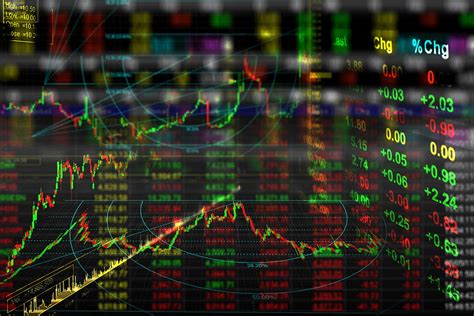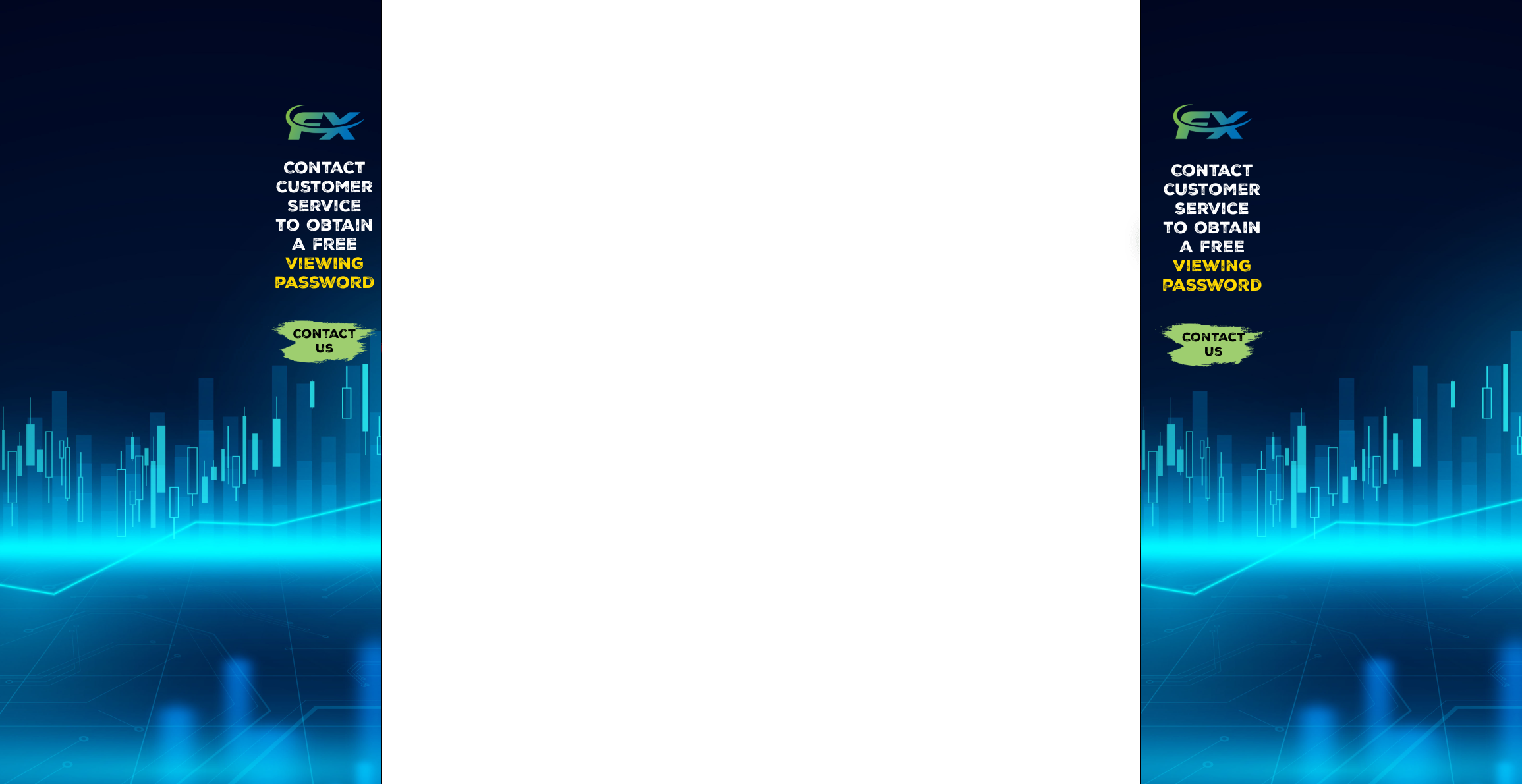The world of currency trading is undergoing a transformation shaped by shifting economic forces, emerging technologies, and evolving regulatory landscapes. To trade Forex successfully in 2025, traders need to stay ahead of these developments and understand where the most advantageous opportunities lie. From platform selection to execution strategies, each decision influences outcomes in a market defined by rapid fluctuations and global interconnectivity. Whether navigating bullish trends or reacting to volatile shifts, knowing where and how to trade Forex efficiently becomes essential for both novice and seasoned traders aiming to maximize their potential in this dynamic environment.

Forex Trading Platforms & Broker Ecosystem
The decision of where to trade Forex in 2025 begins with understanding which platforms and brokers offer security, flexibility, and regulatory integrity.
Top Forex Trading Platforms for 2025: Features & Security
Choosing the right trading platform influences not just trade execution but also access to features like leverage control, order types, and security protocols.
Key considerations include:
Security measures: Two-factor authentication, data encryption, and segregated accounts safeguard funds.
User interface & speed: Fast trade execution across time frames (Minute, Hourly, Daily) is crucial for both short-term Buy/Sell trades and long-term strategies.
Asset variety: Ability to trade multiple currency pairs including Euro, US Dollar, British Pound, Japanese Yen, and Australian Dollar.
Order flexibility: Support for Market Orders, Limit Orders, Stop Loss, and OCO Orders.
Mobile & desktop compatibility: Syncing real-time charts with RSI, MACD, and Bollinger Bands indicators.
Regulatory Considerations When Choosing a Forex Broker
Forex regulations vary across jurisdictions and impact the trader’s safety.
Ensure brokers are licensed by credible bodies (e.g., FCA, ASIC, NFA).
Understand compliance with capital adequacy standards.
Check the broker's transparency in reporting and adherence to interest rate adjustment rules.
Evaluate how the broker handles client funds and negative balance protection policies.
Stay aware of regional rules for leverage limits and margin requirements.
Multi-Currency Account Options: Euro, US Dollar, British Pound
Diversifying accounts based on currency helps manage exposure and conversion costs:
| Broker Name | Base Currencies Supported | Currency Types Highlighted | Fee Structure | Account Type Options |
|---|---|---|---|---|
| EasyCashbackFx | Euro, US Dollar, British Pound, Japanese Yen | Euro, US Dollar, British Pound, Japanese Yen | Low spreads | ECN, Market Maker |
| FXPrimeMarkets | US Dollar, Australian Dollar, Canadian Dollar | US Dollar, Australian Dollar, Canadian Dollar | Commission-based | ECN only |
| SecureForexPro | British Pound, Swiss Franc, Singapore Dollar | British Pound, Swiss Franc, Singapore Dollar | Variable spreads | Market Maker & ECN |
| GlobalTraderHub | Euro, Hong Kong Dollar, Norwegian Krone | Euro, Hong Kong Dollar, Norwegian Krone | Flat fees | Multi-currency premium accounts |
| SwiftPipBroker | US Dollar, New Zealand Dollar, Swedish Krona | US Dollar, New Zealand Dollar, Swedish Krona | No commission | Standard, ECN, VIP accounts |
Having accounts in different currencies like British Pound or US Dollar not only reduces exposure to volatile exchange rates but also eases international fund transfers when trading Forex globally.

Leverage & Margin Requirements: What to Know in 2025
Regulations and market dynamics are changing how leverage is applied.
Standard leverage offerings are tightening in regions like Europe and Australia.
Expect leverage caps based on trader classification (Retail vs. Professional).
Margin calls are stricter, affecting Bearish or Volatile market positions.
Use leverage cautiously, particularly when executing Long or Short positions.
Brokers offering dynamic margin adjustment can help traders balance risk during trending or range-bound conditions.
Comparing ECN vs. Market Maker Brokers for Forex Trades
The choice between ECN and Market Maker brokers can shape a trader's entire strategy.
Market Makers:
Provide fixed spreads and instant execution.
Often suitable for beginners needing stability.
Offer simplified order types like Market Orders and Take Profit setups.
ECN Brokers:
Connect traders directly to liquidity providers.
Feature tight spreads, ideal for scalping strategies across Minute or Hourly time frames.
Support advanced order types, including Pending Orders and OCO Orders.
While Market Makers manage the opposite side of a trade internally, ECN brokers charge commissions but offer more transparency and access to real market depth. Traders aiming to maximize efficiency in Bullish or Bearish conditions often prefer ECN models, especially when using technical indicators like Ichimoku Cloud or RSI to fine-tune entries.

Mastering Order Execution in Forex
Successful traders in 2025 don’t just trade Forex—they master order execution strategies that adapt to market conditions, technical indicators, and economic shifts.
Market Orders vs. Limit Orders: Optimal Use Cases
Understanding when to apply a Market Order versus a Limit Order shapes the speed and price precision of every trade:
Market Orders:
Instant execution at the current market price.
Ideal in fast-moving Bullish or Bearish markets where immediate entry or exit is critical.
Useful for traders reacting to economic indicators like Interest Rate announcements.
Limit Orders:
Set to execute at a specific price level.
Effective for entries at strong support/resistance levels identified using Fibonacci or Moving Average.
Preferred in Range-bound or Sideways market conditions to avoid slippage.
Applying these correctly ensures traders optimize trade timing, especially during volatile market swings or high-impact Retail Sales data releases.
Advanced Strategies with Stop Loss & Take Profit Orders
The careful placement of Stop Loss and Take Profit orders is non-negotiable for effective risk management.
Stop Loss Orders
Prevent catastrophic losses in volatile conditions.
Positioned below support zones in Long trades, above resistance in Short trades.
Can be trailed to lock profits as trends continue.
Take Profit Orders
Target profit points aligned with technical indicators like RSI or MACD.
Best used when markets exhibit Trending behavior, ensuring gains are secured before reversals.
These tools protect against sudden shifts, whether during Inflation Rate reports or unexpected geopolitical shifts impacting currency pairs like Euro, US Dollar, or British Pound.
How Pending Orders Influence Trade Forex Strategies
Pending Orders—whether Buy Stop, Sell Stop, or Limit—offer flexibility for traders aiming to automate entries under specific conditions. The ability to queue trades based on pre-set price levels ensures strategic control, particularly when managing currencies like the Japanese Yen or Australian Dollar during volatile periods.
| Order Type | Purpose | Ideal Use Case | Example Application |
|---|---|---|---|
| Buy Stop | Buy above the current price to catch a breakout | Bullish trends confirmed by Moving Average crossovers | Enter Long position when US Dollar breaks above resistance level post-GDP announcement |
| Sell Stop | Sell below current price to capitalize on downward movement | Bearish markets, RSI overbought conditions | Short the British Pound after Producer Price Index report triggers bearish sentiment |
| Buy Limit | Buy below current price at support | Range-bound conditions, Fibonacci support zones | Buy Australian Dollar at support after Retail Sales data release shows consumer weakness |
| Sell Limit | Sell above current price at resistance | Sideways markets, Ichimoku Cloud resistance | Short Euro at key resistance level ahead of Interest Rate policy statement |
Pending Orders allow precise positioning without constant monitoring, ensuring opportunities aren't missed across multiple time frames (Minute, Hourly, Daily).
Hedging Techniques Using OCO Orders
A trader holding a position during volatile or uncertain times—perhaps when both Inflation Rate hikes and Trade Balance reports are imminent—needs to manage risk dynamically.
One Cancels the Other (OCO) Orders provide that flexibility:
Step 1:
Place a Buy Stop above resistance and a Sell Stop below support.
Step 2:
Once either is triggered, the opposite order cancels automatically, locking in directional movement.
This technique is powerful when trading currencies like the Canadian Dollar or Swiss Franc, especially in choppy markets where sudden moves are common. Combining OCO Orders with indicators such as Bollinger Bands sharpens the approach, ensuring traders hedge efficiently without overexposing their positions.
Technical Indicators to Enhance Forex Trading Decisions
Technical indicators sharpen trade Forex strategies, improving timing and risk control across various currencies and market conditions.
Applying Moving Averages Across Different Time Frames
Moving Averages act as dynamic support and resistance points, smoothing price action across multiple time frames:
Minute & Hourly: Short-term traders rely on 9-period or 21-period averages to spot quick entry points in currencies like the US Dollar or Japanese Yen.
Daily & Weekly: Longer-term positions use 50-period or 200-period averages, essential for detecting bullish or bearish trends.
Monthly & Yearly: Strategic investors align positions in major pairs such as Euro/British Pound based on broad trend direction.
Combining Moving Averages with RSI enhances clarity, particularly when planning Buy or Sell orders in volatile conditions.

Using RSI & MACD to Confirm Trade Forex Entries
The interplay between RSI (Relative Strength Index) and MACD (Moving Average Convergence Divergence) offers strong confirmation signals:
RSI (14-period):
Detects overbought (>70) and oversold (<30) zones.
Effective for Short trades when RSI diverges in a bullish market.
MACD:
Highlights momentum shifts.
Crossovers signal Long or Short opportunities, particularly in trending conditions.
Example: When trading the Australian Dollar, a bullish MACD crossover with RSI near 50 signals robust Buy opportunities after key GDP announcements.
Fibonacci Retracement: Identifying Support & Resistance
Fibonacci retracement tools help traders define support and resistance levels based on natural price pullbacks.
| Retracement Level | Usage in Forex Trading | Ideal Application | Currency Example |
|---|---|---|---|
| 23.6% | Shallow pullbacks, ideal for strong trending markets | Buy during minor retracement in bullish US Dollar trend | US Dollar |
| 38.2% | Moderate corrections | Enter trades in range-bound conditions post Consumer Price Index release | Euro |
| 50% | Common retracement, psychologically significant | Short-term entries after strong Sell-off in British Pound | British Pound |
| 61.8% | Key level for reversals | Plan Stop Loss below this level when Long after bullish Trade Balance report | Japanese Yen |
| 78.6% | Deep retracements before trend continuation | Hedge positions if nearing resistance after Retail Sales disappointment | Canadian Dollar |
Fibonacci lines align with other indicators like Bollinger Bands for confirmation.
Bollinger Bands for Volatility Trading
Bollinger Bands visually encapsulate price volatility.
When market conditions shift from Sideways to Volatile, the bands widen, indicating increased risk and opportunity.
Traders use:
Upper band touch: Potential Sell signal, particularly for currencies like Swiss Franc.
Lower band touch: Potential Buy entry during Bearish exhaustion.
Squeeze patterns: Foreshadow sharp moves after periods of consolidation, essential during Interest Rate policy shifts.
Pairing Bollinger Bands with Pending Orders sharpens trade entries.
Stochastic Oscillator Signals in Sideways Markets
In range-bound or Sideways markets, the Stochastic Oscillator excels at pinpointing reversals.
Overbought (>80): Indicates a Sell setup, particularly relevant when the Euro faces resistance.
Oversold (<20): Triggers Buy positions during support tests of currencies like Singapore Dollar.
Regular divergences between price action and the oscillator enhance the accuracy of Limit Orders and Stop Loss placements, reducing exposure in trending environments.
Leveraging Ichimoku Cloud for Trend Confirmation
The Ichimoku Cloud is a comprehensive tool offering a snapshot of trend, momentum, and potential reversals.
When the price remains above the cloud, bullish sentiment prevails, favoring Long entries on currencies like New Zealand Dollar.
Conversely, a price breakdown below the cloud often signals bearish conditions ideal for Short trades.
Key components:
Kumo Cloud: Represents support/resistance.
Tenkan-sen & Kijun-sen lines: Generate crossovers indicating entry points.
Chikou Span: Acts as confirmation of trend strength, valuable when trading volatile pairs like Norwegian Krone.
Combining Ichimoku signals with Moving Averages or RSI ensures high-probability trade setups.
Trading Forex Across Market Conditions

The ability to trade Forex successfully hinges on adjusting techniques to fit shifting market conditions and technical indicators.
Trading Strategies for Bullish vs. Bearish Markets
Market sentiment plays a pivotal role in shaping trading decisions:
Bullish Markets
Buy (Long) strategies thrive when currencies like US Dollar or Japanese Yen break resistance.
Employ Moving Averages crossover to confirm upward momentum.
Take Profit orders set above key Fibonacci levels secure gains.
Bearish Markets
Sell (Short) opportunities dominate when currencies such as British Pound decline post Interest Rate adjustments.
Use RSI overbought signals for precise entry.
Position Stop Loss orders above Ichimoku Cloud resistance to manage risk.
Recognizing the distinction between bullish and bearish conditions allows traders to apply the right transaction type and optimize order execution.
Volatile vs. Range-Bound: How to Adjust Your Forex Approach
Volatility levels dictate trade Forex tactics. Comparing these conditions reveals why strategies must shift accordingly:
| Market Condition | Characteristics | Ideal Indicators | Suitable Orders | Currency Application Examples |
|---|---|---|---|---|
| Volatile | Sharp price swings, wide Bollinger Bands | Bollinger Bands, MACD divergence | Pending Orders, OCO Orders | Japanese Yen, Canadian Dollar |
| Range-Bound | Narrow price range, repeated support/resistance levels | Stochastic Oscillator, RSI at extremes | Limit Orders, Take Profit setups | Euro, British Pound |
In volatile conditions, traders prioritize fast order types, while range-bound markets favor precision entries near technical support and resistance.
Adapting Trade Forex Techniques to Trending Markets
Trending markets demand discipline and adaptability. Whether a bullish or bearish trend prevails, traders must align strategies with price direction across different time frames.
In a bullish trend:
Long positions benefit from trailing Stop Loss orders beneath the Moving Average to protect gains.
Currencies like the Australian Dollar often exhibit strong trending behavior post GDP growth announcements, where Bollinger Bands confirm momentum.
In a bearish trend:
Short trades require patience, often supported by MACD crossovers.
Setting Sell Stop Pending Orders below key support, especially during Retail Sales downturns, enhances risk management.
Adapting technical tools such as Ichimoku Cloud or Fibonacci retracement levels ensures that trade entries are consistently aligned with overall market flow, keeping traders positioned advantageously across Yearly or Monthly time frames.
Economic Indicators Impacting Forex Markets
Economic indicators provide the foundation for understanding why currencies fluctuate, influencing when and how traders choose to trade Forex.
Interest Rate Decisions: Forex Volatility Drivers
Interest Rate decisions from central banks create immediate Forex volatility:
A rate hike strengthens currencies like the US Dollar or British Pound, sparking bullish sentiment.
A rate cut weakens currencies, increasing bearish pressure on the Euro, Canadian Dollar, or Japanese Yen.
Interest Rate changes affect long-term currency trends, guiding strategic Long or Short positioning.
Traders often react within Minute or Hourly time frames, capitalizing on sharp moves through Market Orders and Stop Loss protections.
Reacting appropriately to Interest Rate decisions requires close monitoring of central banks’ monetary policies.
Inflation Rate & Its Correlation with Currency Strength
Rising Inflation Rates can erode purchasing power but often prompt central banks to adjust Interest Rates, affecting Forex dynamics.
High Inflation Rate triggers expectations of rate hikes, lifting currencies such as the Australian Dollar or Norwegian Krone.
Low Inflation Rate dampens currency strength, particularly in Sideways or Range-bound conditions.
Technical indicators like RSI and Bollinger Bands help refine trade entries following Inflation Rate announcements.
Traders align Forex strategies with inflation trends to anticipate monetary tightening or loosening cycles.
GDP & Unemployment Rate Data Releases for Forex Traders
Economic health directly correlates to currency performance, making GDP and Unemployment Rate essential data points.
| Economic Indicator | Impact on Currency Strength | Optimal Trading Strategy | Currency Application Example |
|---|---|---|---|
| GDP Growth | Signals expanding economy, supports bullish moves | Buy positions post-positive GDP data | Euro, US Dollar |
| GDP Contraction | Indicates economic slowdown, weakens currency | Short entries favored | British Pound, Japanese Yen |
| Rising Unemployment | Dampens consumer spending, leads to bearish sentiment | Pending Orders placed to capture downside | Canadian Dollar, Australian Dollar |
| Falling Unemployment | Strengthens economic outlook, bullish implications | Limit Orders set for Long positions | Swiss Franc, New Zealand Dollar |
Timing trades around GDP and employment reports increases precision.
Consumer Price Index and Trade Balance: Currency Impacts
Consumer Price Index (CPI) and Trade Balance figures play a dual role in shaping Forex trends.
High CPI reflects increased consumer costs, often prompting central banks to adjust Interest Rates, strengthening currencies like the Singapore Dollar. Conversely, a widening Trade Balance deficit weakens national currencies, especially during Bearish market conditions.
Applying Fibonacci retracement levels and MACD after CPI or Trade Balance releases helps identify reversal points or continuation patterns, aligning trading actions with real-time macroeconomic data.
Retail Sales Reports as Short-Term Trading Catalysts
Retail Sales reports reveal consumer spending trends and often act as short-term Forex catalysts.
When a country's Retail Sales surge, bullish pressure builds on its currency. For instance, strong sales figures in the US can fuel demand for the US Dollar. Traders often:
Monitor Retail Sales releases closely.
Place Market Orders for immediate reaction trades.
Utilize technical confirmation tools like Stochastic Oscillator to validate entries.
Manage risk using Stop Loss orders, especially during Volatile periods.
Retail Sales serve as reliable triggers for both short-term scalpers and long-term traders seeking confirmation for their strategies.
Conclusion
Staying competitive in the Forex market in 2025 requires more than just reacting to price movements. Success comes from integrating deep knowledge of trading platforms, mastering order types, leveraging technical indicators, adapting strategies to shifting market conditions, and keeping a close eye on global economic indicators. Each factor plays a critical role in shaping how traders approach their decisions, especially when looking to trade Forex with precision and confidence. Currency pairs such as the US Dollar, Euro, and British Pound will continue to dominate, but the ability to respond to economic indicators like inflation rates and interest rates will set apart the traders who thrive. As trading becomes increasingly influenced by data, regulation, and technology, making informed choices at every stage becomes the key to navigating the Forex landscape effectively.
The best time frame depends on your trading strategy. Scalpers prefer minute and hourly charts for quick trades, while swing traders may use daily or weekly charts to capture larger price movements. Long-term investors typically monitor monthly or yearly charts.
Economic indicators shape market sentiment and currency strength:
Interest Rate changes often lead to sharp currency movements.
GDP reports impact investor confidence in a country’s economy.
Unemployment Rate affects the stability of a currency.
Inflation Rate can erode purchasing power, influencing Forex pricing.
Several technical indicators are commonly trusted by traders:
Moving Average to identify trend direction.
RSI for spotting overbought or oversold conditions.
MACD to gauge momentum shifts.
Bollinger Bands for assessing market volatility.
A Market Order executes immediately at the current price, ensuring swift entry or exit.
A Limit Order, on the other hand, is placed at a specific price point and executes only when the market reaches that price, giving traders more control over entry levels.
Volatile conditions often demand faster decision-making and tighter risk controls. Traders may adjust by:
Using wider Stop Loss and Take Profit levels.
Applying indicators like Bollinger Bands to gauge price swings.
Preferring shorter Time Frames to react quickly.
Hedging positions with OCO Orders to manage risk exposure.
Several key factors matter:
Regulatory status and security measures.
Range of supported currencies, including majors like US Dollar and Japanese Yen.
Availability of advanced order types such as Pending Orders and Hedge options.
Trading fees, spreads, and leverage offerings tailored to your strategy.







